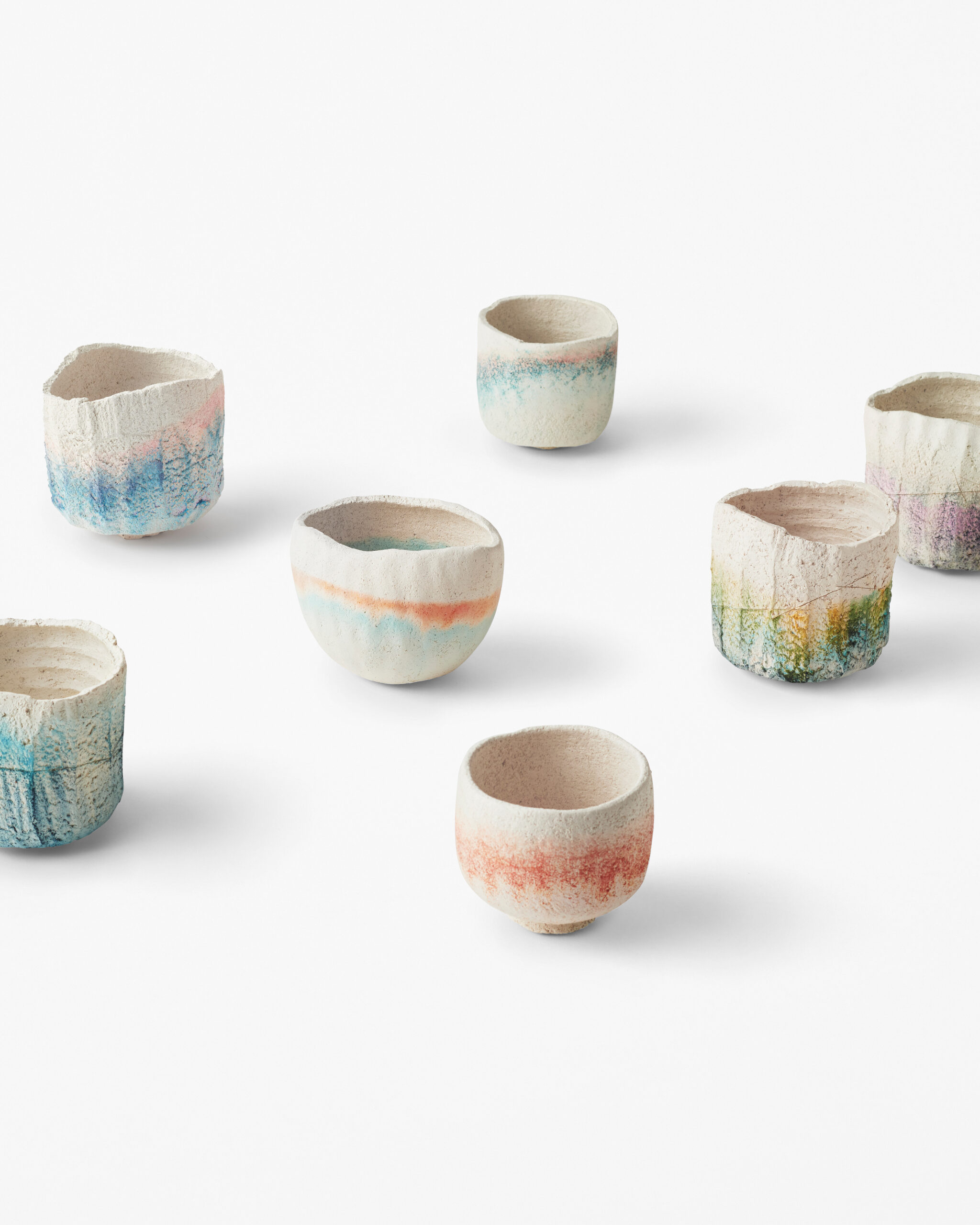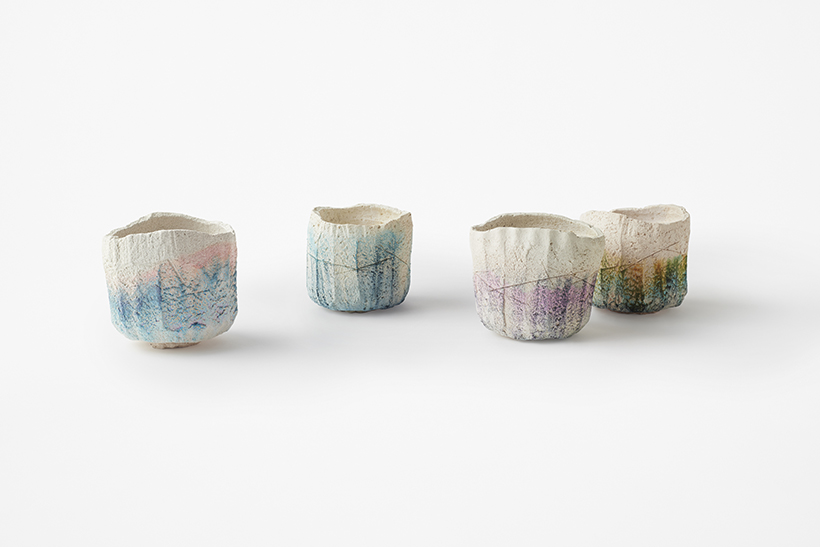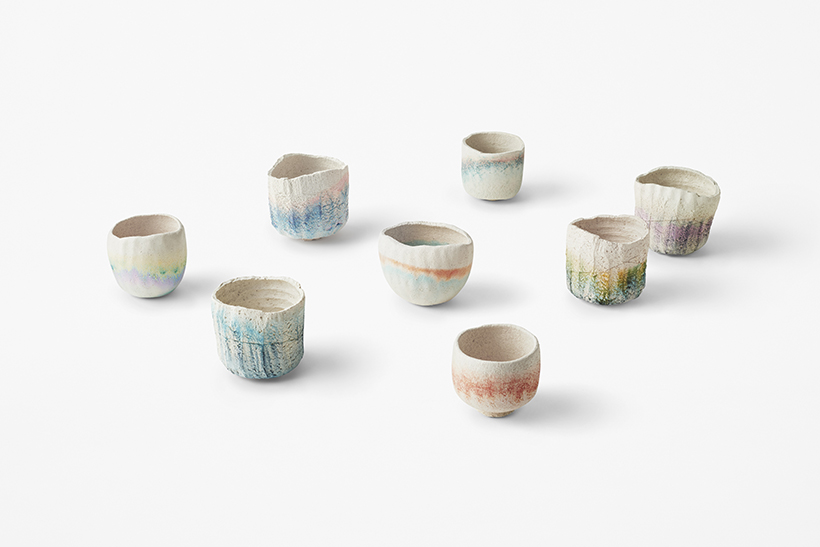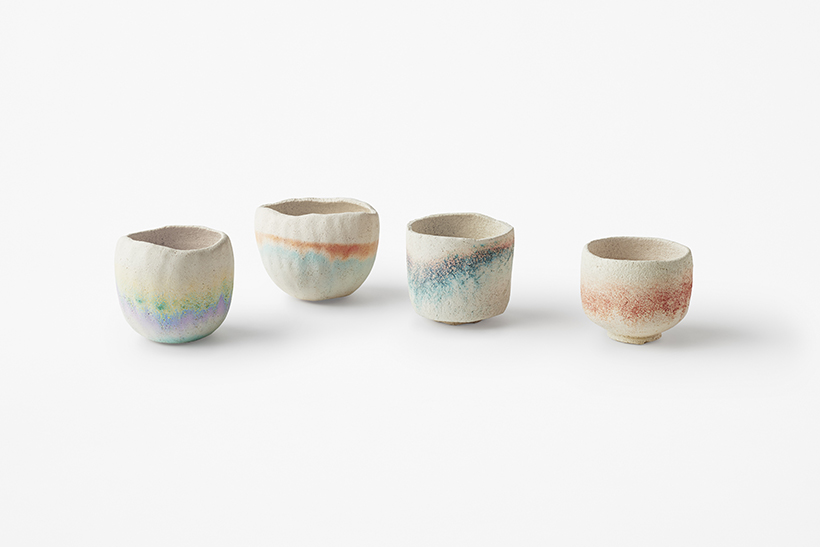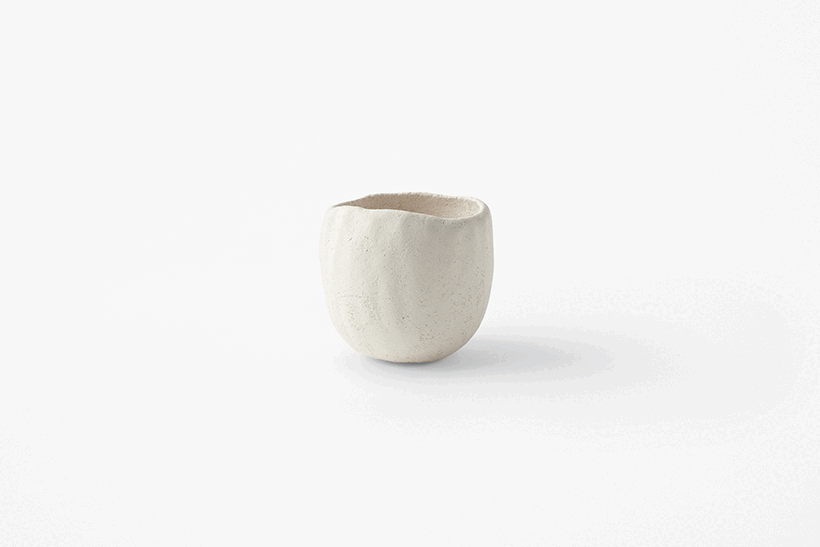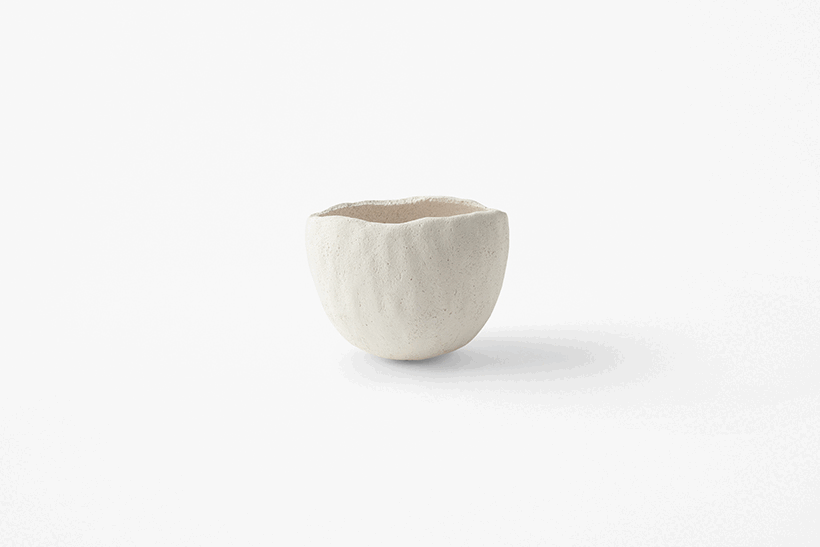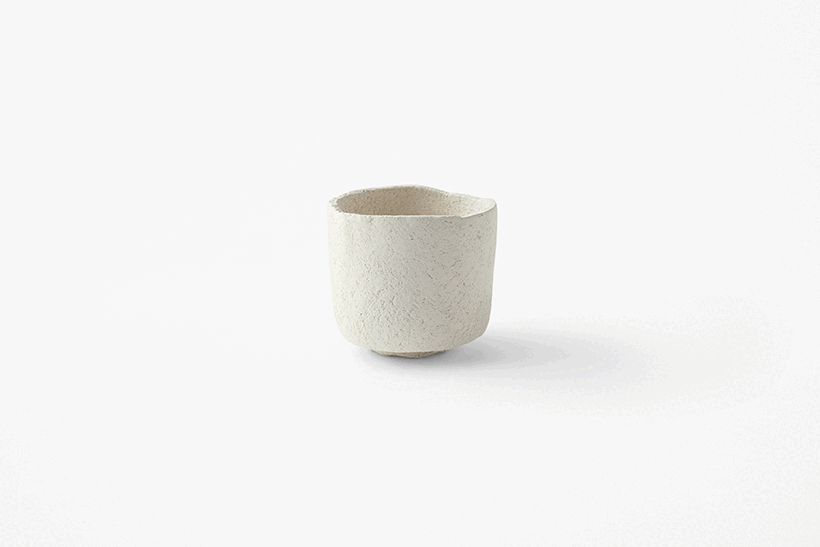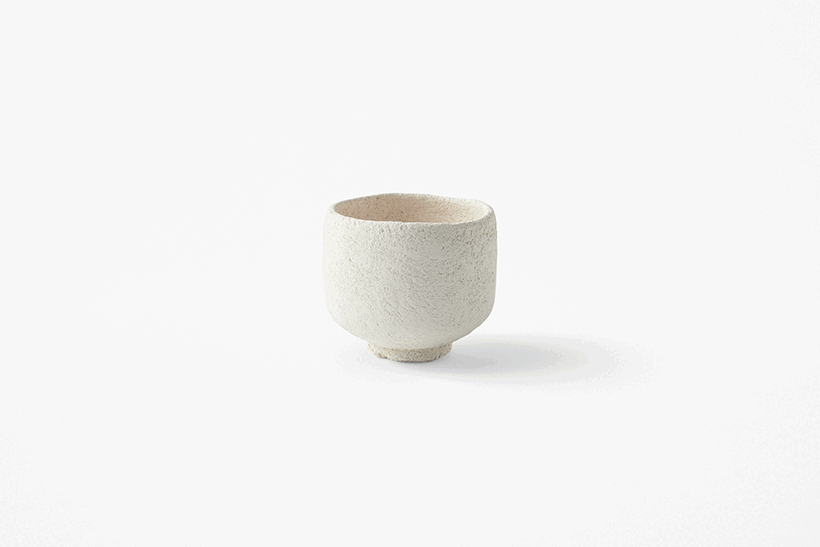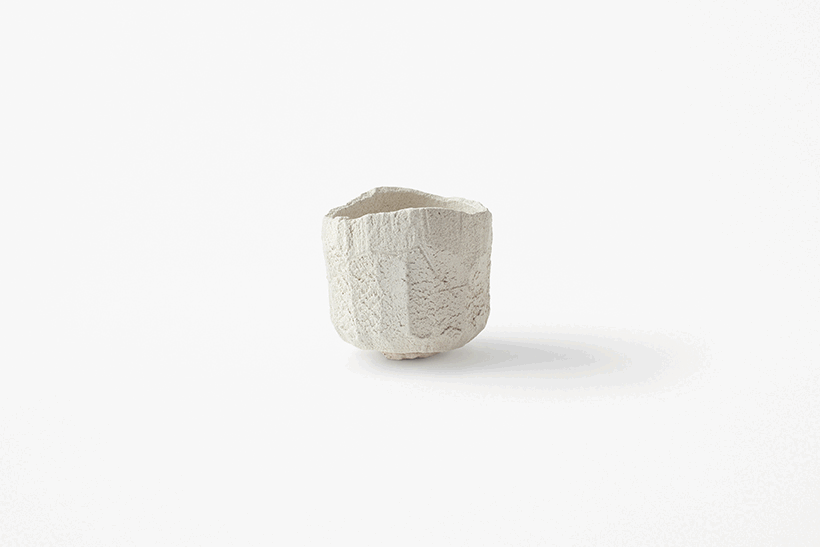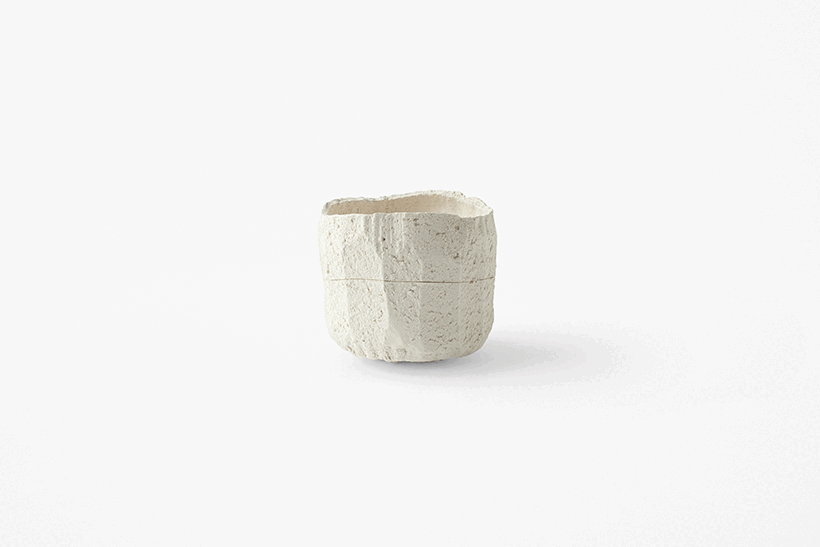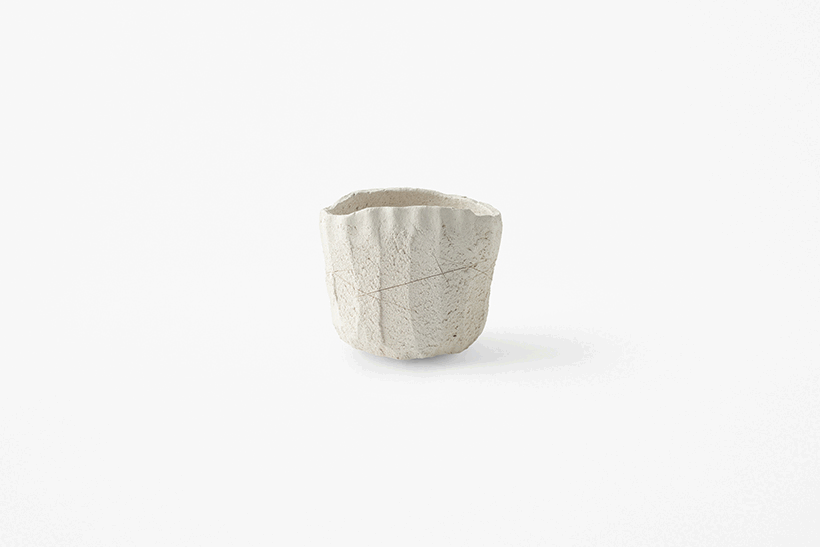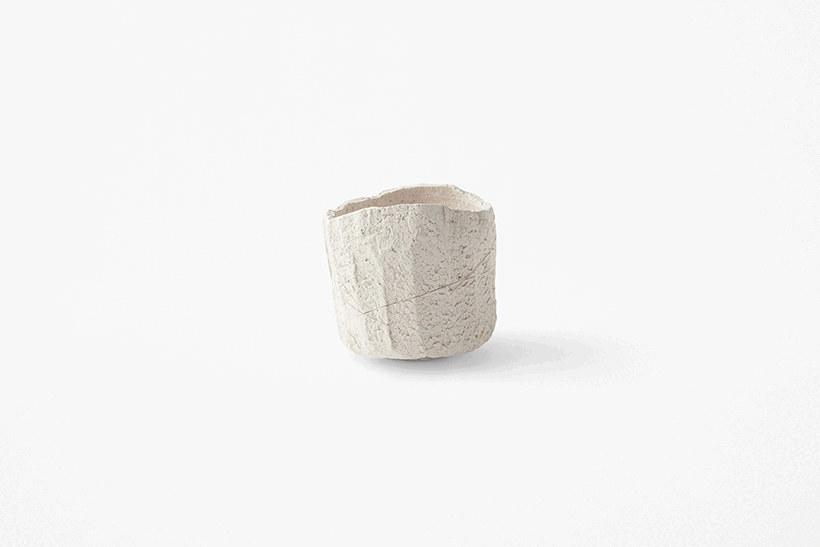junwan -chroma-
Raku bowls are characterized by their soft, porous clay material and thick form. The “Junwan (saturated bowl)” collection, which was introduced in 2022, was a collection of tea bowls that drew their own patterns by absorbing pigments. The concept was further developed by imbuing the bowls with water and water-based fountain pen ink.
First, ink lines are drawn on the bottom of the bowl. Next, the bowl is placed on a piece of water-soaked felt, and the pigments adhering to the bottom of the bowl gradually move upward, simultaneously breaking down into multiple colors. This is a method of separation and analysis of chemical mixtures called chromatography. It reveals that ink, which is usually thought of as a “single color,” is in fact made by mixing multiple dye components. As for the process of pigment separation, the water is first totally absorbed into the clay, and next the water pulls up the dye. Dyes that are more compatible with water and can remain dissolved in water for a long time are pulled up to the top along with the water. On the other hand, the pigments that are more compatible with the bowl stay at the bottom because they settle into the clay at an early stage. The difference in “compatibility with water” and “compatibility with the bowl” is the mechanism that separates the pigments.
Subsequent drying causes pigments hidden inside the bowl to emerge to the surface, but they collect on the fine convexities of the surface, generating further unevenness of color. In four of the eight bowls in the collection, the colors are separated largely in the vertical direction due to the bowls’ fine surface texture. The remaining four bowls have a rough surface, so the colors stay at the bottom and manifest in a speckled pattern.
In this way, the various actions that occur between the three elements of pigment, water, and bowl create a unique expression. The individuality inherent in each tea bowl, such as the type of clay, the degree of firing, variations in thickness, and minute irregularities, was emphasized by the colors.
